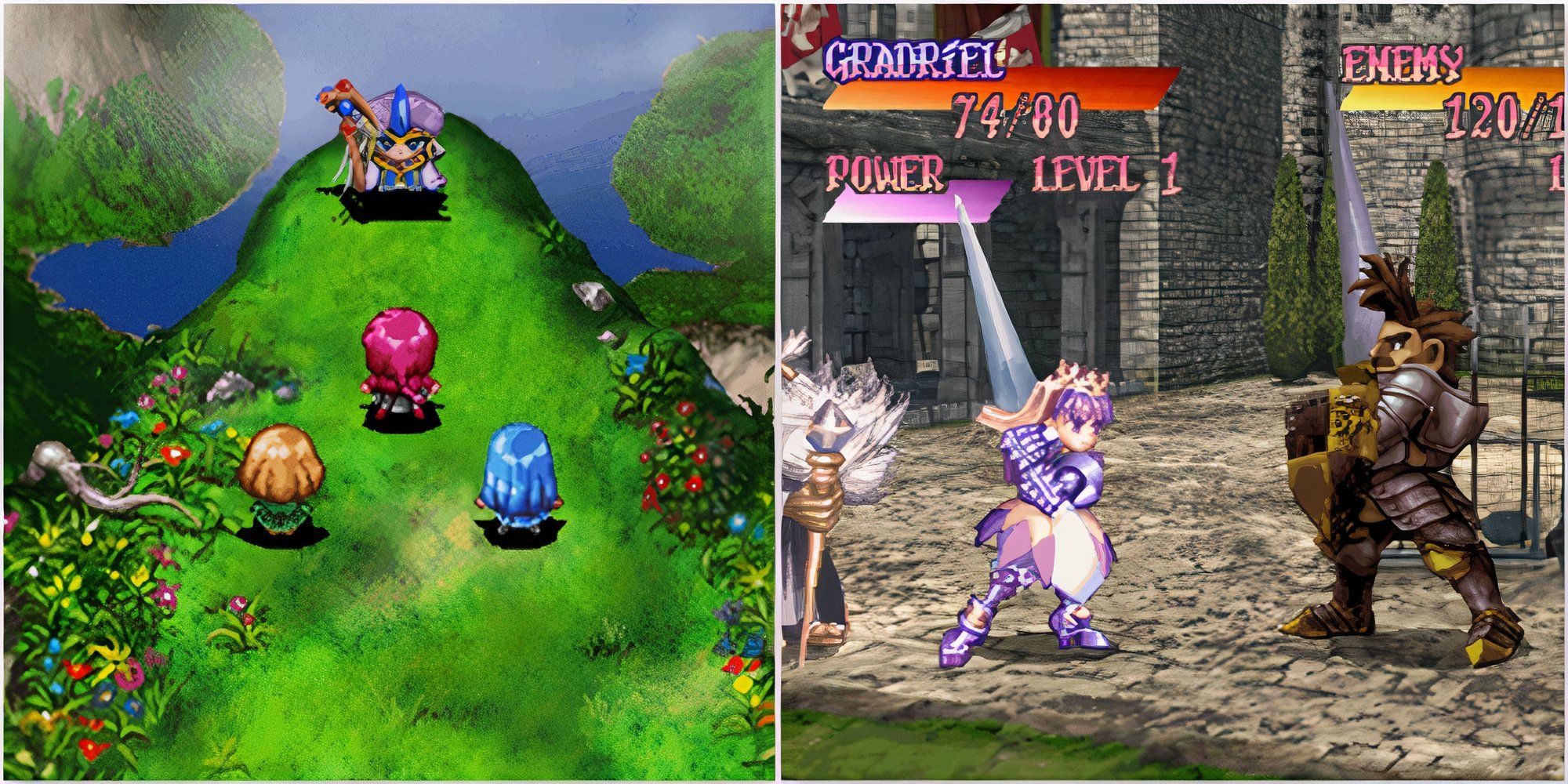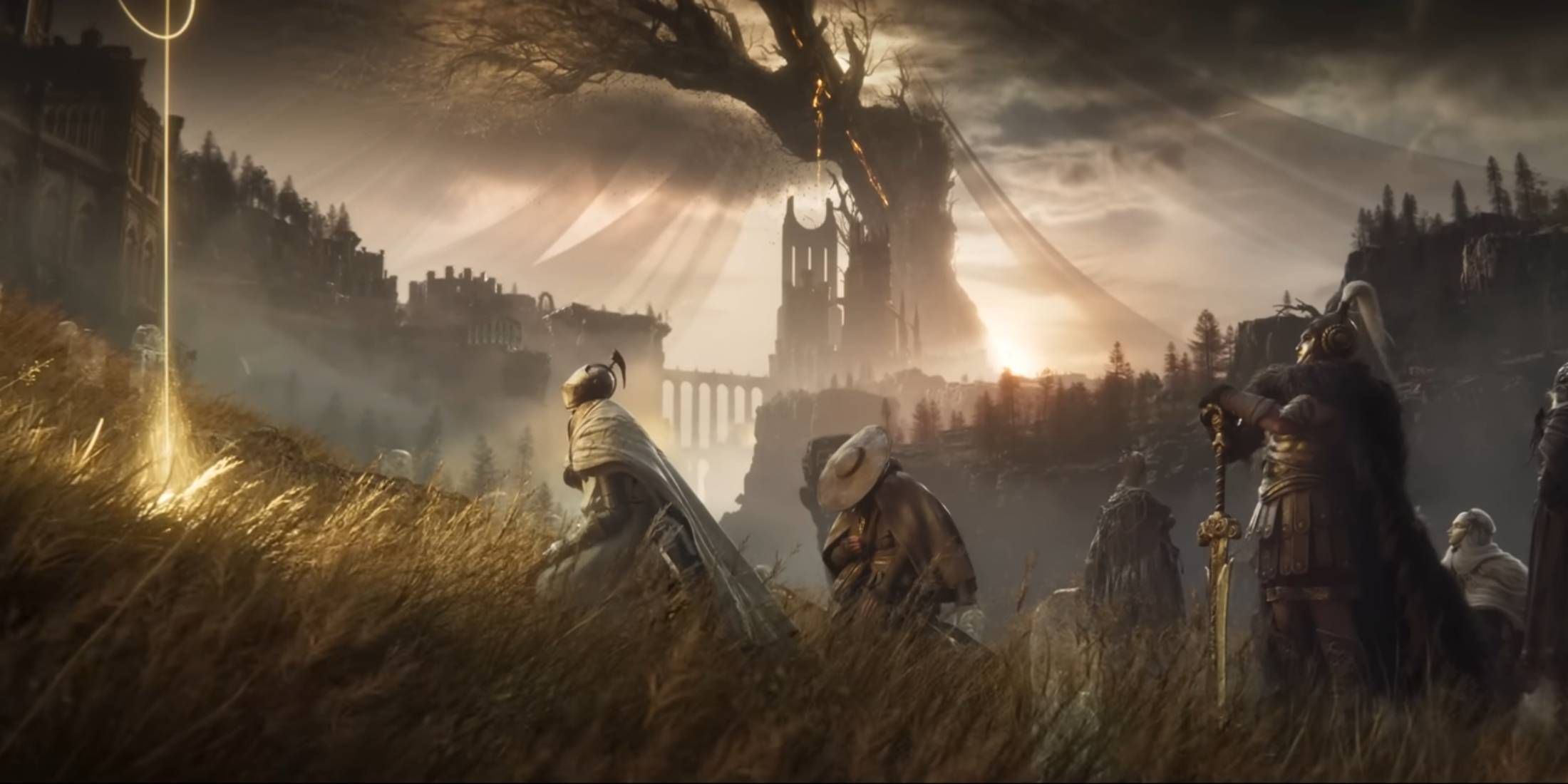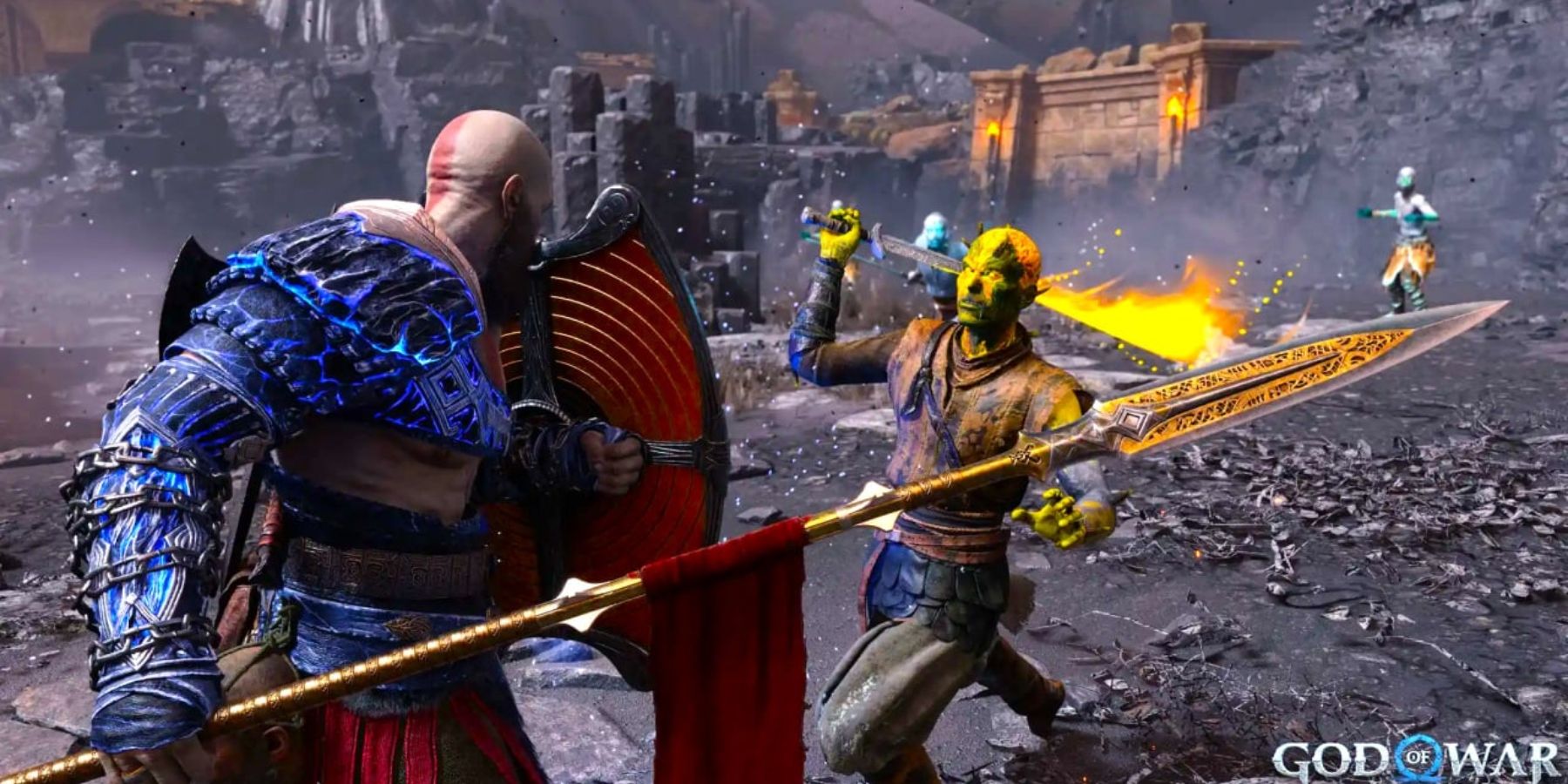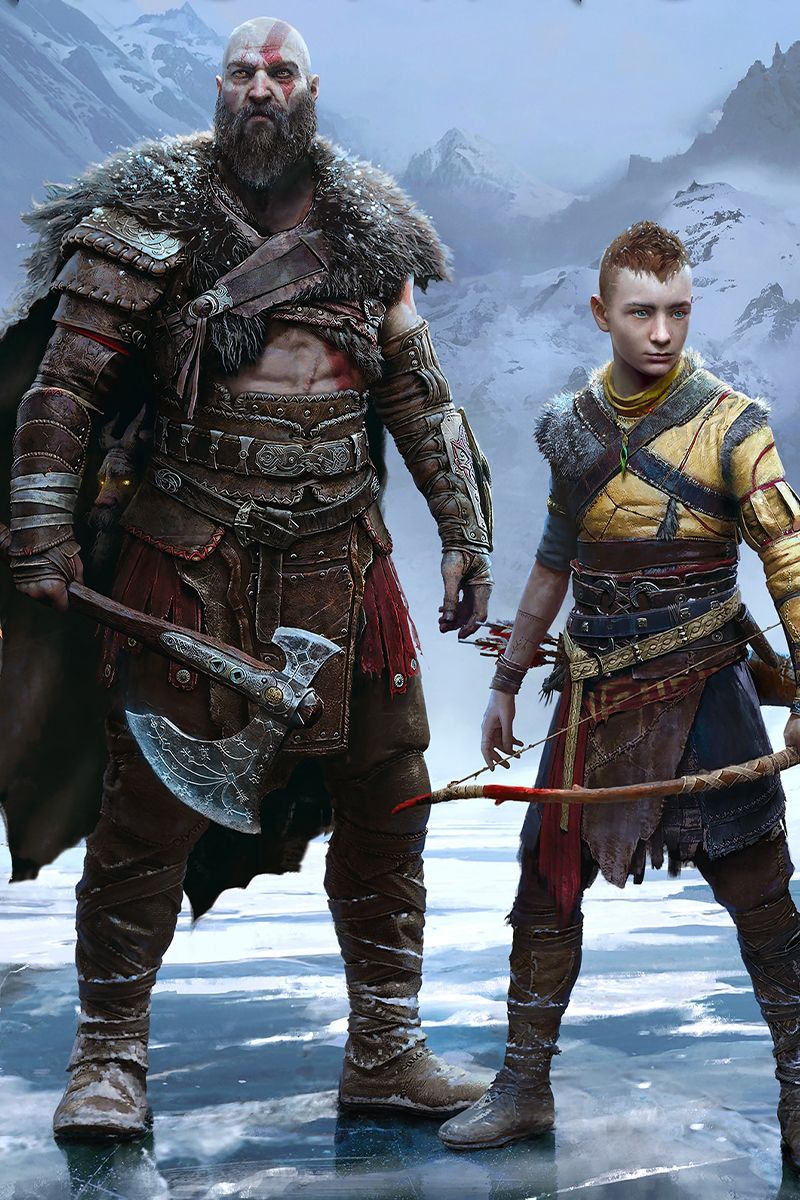Warning: Spoilers ahead for God of War Ragnarok's Valhalla DLC.The God of War series is home to some of the most iconic weapons in gaming. Even just the latest entry, God of War Ragnarok, has three of the most beloved video game weapons of all time in it, with the Leviathan Axe, the Blades of Chaos, and the new Draupnir Spear, each one signifying a different chapter in Kratos' life and all showing how the character has accepted and embraced those parts of himself. God of War's weapons are far more than just tools to slay enemies, and thankfully, God of War Ragnarok: Valhalla puts that front and center.
Just like any other good roguelike, God of War Ragnarok: Valhalla puts a heavy emphasis on the game's three main weapons, really encouraging players to master each one so that they can best tailor the abilities and perks that get thrown their way during a run. But God of War Ragnarok: Valhalla isn't content with just giving players the same old weapons and abilities they already know so well. Instead, it brings back one of the most iconic God of War weapons of all time: the Blade of Olympus.
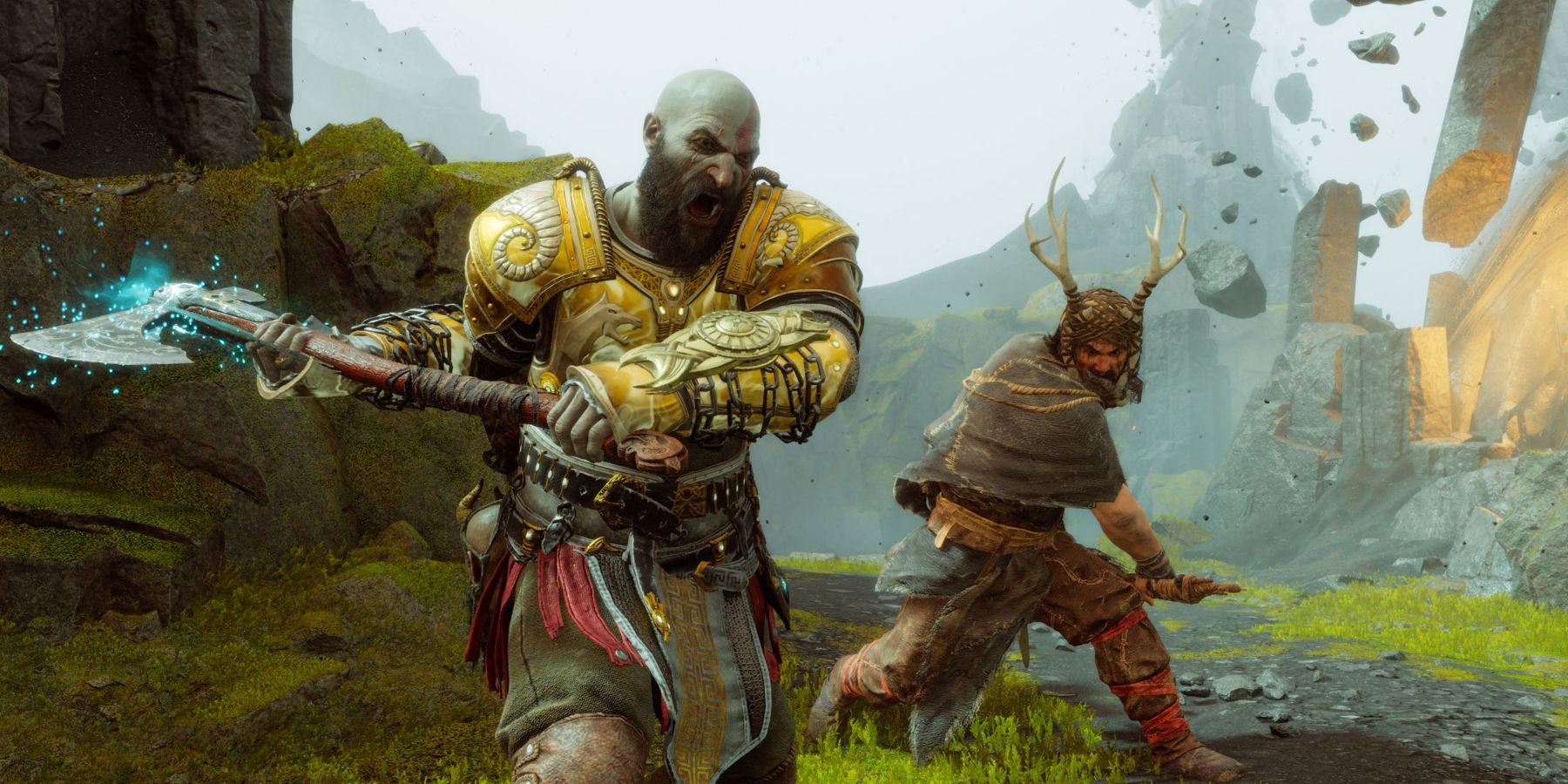
The Unwritten Rules of God of War Ragnarok's Valhalla DLC Explained
God of War's free Valhalla DLC has arrived, offering a fresh, roguelike twist on the franchise's familiar hack-and-slash combat.
God of War Ragnarok: Valhalla's Blade of Olympus Should Be a Permanent Addition
God of War's Blade of Olympus Explained
As long-time fans will know all too well, the Blade of Olympus is somewhat of a staple of the original God of War Greek saga, being almost as iconic as the Blades of Chaos themselves. In God of War lore, the Blade of Olympus was originally crafted by Zeus during the first war against the Titans, known as the Titanomachy. With the Blade in hand, Zeus was able to banish the Titans to Tartarus, thus ending the war.
During the events of God of War 2, Zeus sends Kratos the Blade of Olympus to aid him in his fight against the Colossus of Rhodes. While the Blade does help to turn the tide of the battle, it also weakens Kratos, with Zeus having tricked him into allowing the sword to drain his God-like powers. Zeus then appears before Kratos, taking back the Blade and plunging it into his stomach, sending him to Hades and giving him a brutal scar that can be seen throughout the God of War Norse saga.
Keeping the Blade of Olympus Makes Sense for Kratos' Character Arc
In God of War Ragnarok: Valhalla, Kratos goes on a journey of self-reflection alongside his body-less friend Mimir. Along the way, Kratos finds himself in a memory of the past and has to face off against a horde of Ancient Greek foes. Embracing his past just as Valhalla wants him to do, Kratos summons an illusionary Blade of Olympus, which then becomes a brand-new Spartan Rage ability for the player.
While its presence in a potential sequel might need some real explaining, it would make complete sense for the Blade of Olympus to now be a part of Kratos' arsenal, at least from a character arc perspective. The whole premise of God of War Ragnarok's Valhalla DLC is that Kratos has been asked by Freya to become the new Norse God of War, and in an attempt to determine whether he should accept, he takes himself to Valhalla, where he's told to master himself to receive the answers he's looking for.
Without spoiling too much, by the end of God of War Ragnarok: Valhalla, Kratos has accepted his past life of revenge and bloodshed and has learned that accepting Freya's offer doesn't necessarily mean that he'd fall into the same vengeful cycle again. This theme of acceptance is core to Ragnarok's Valhalla DLC, and his acceptance of the Blade of Olympus exemplifies it. Keeping the Blade of Olympus for the next God of War wouldn't just be a great way to tie all the franchise's sagas together, but it would encapsulate Kratos' entire character arc.

